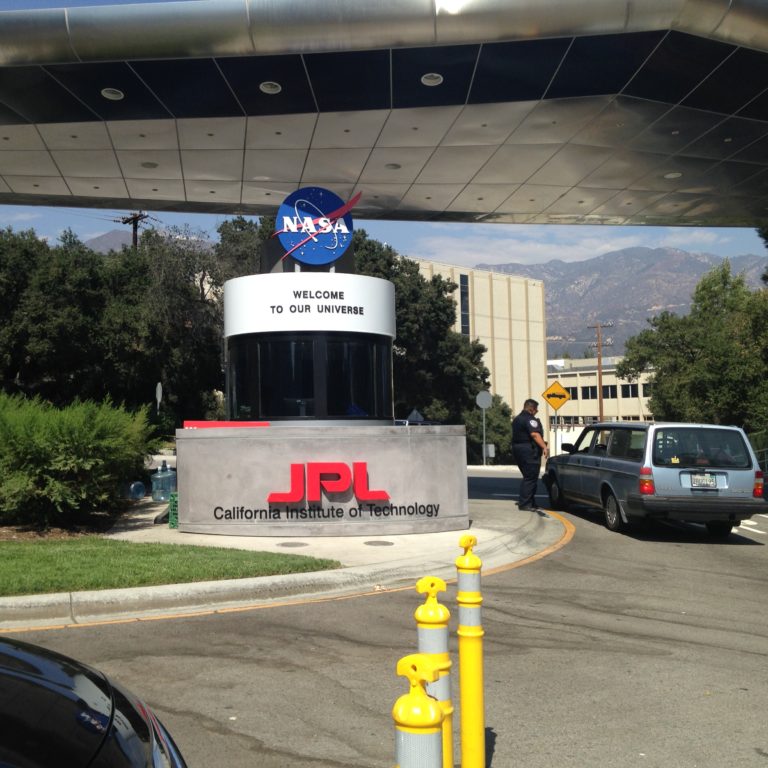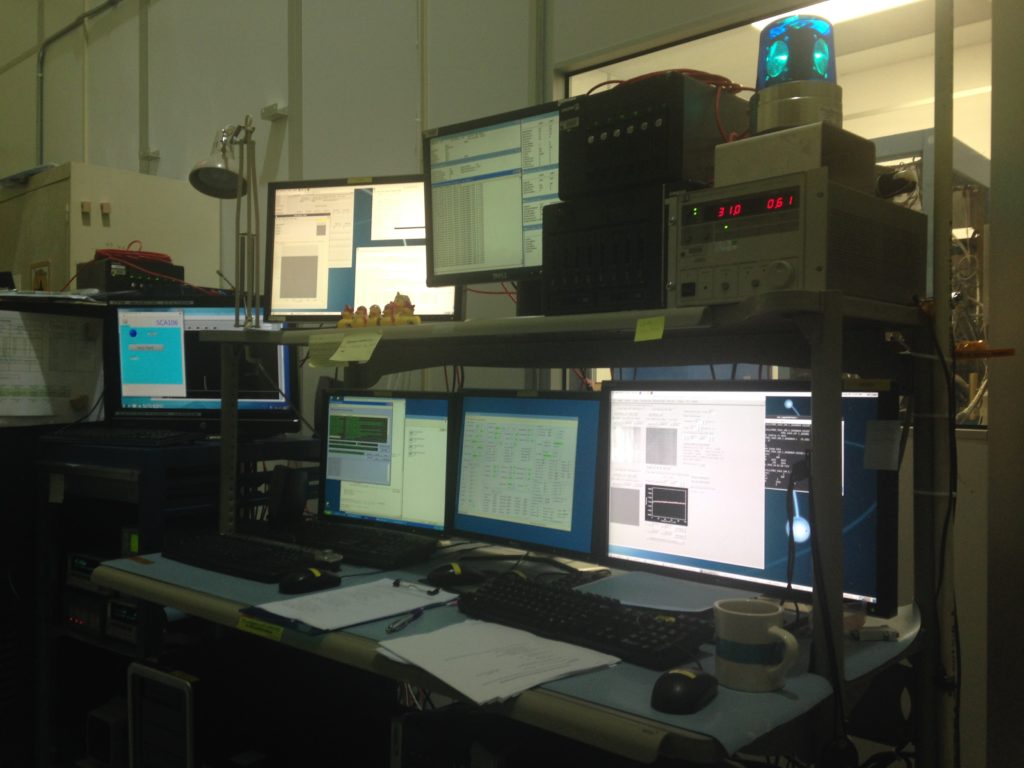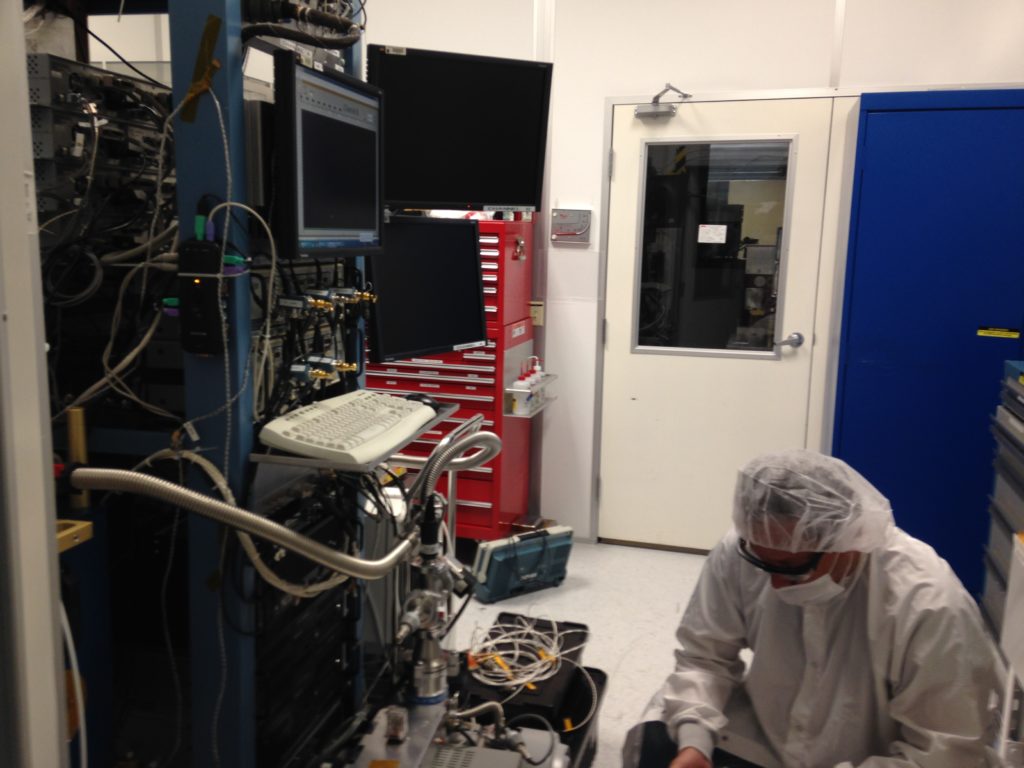Detectors
The 5 to 28 micron imager and spectrometer that is slated to fly aboard the JWST in 2018, MIRI (Mid-Infrared Instrument), is equipped with three flight detector arrays, each 1024 × 1024 pixels, Si:As impurity band conductors, developed by Raytheon Vision Systems.

JPL

- La salle de contrôle à JPL
JPL, in conjunction with the MIRI science team, has selected the three flight arrays along with their spares.

- The room at JPL where the detectors stand
A tutorial on how these detectors work (from M. Ressler, JPL) is available at: Detector Handout
List
The list below includes reports based on tests made at GSFC during which MIRI was inside ISIM (CV1, CV2, CV3), and on the 9 tests performed at JPL. The following reports are NOT intended for the general public, but rather for the professionals. Some of them my be consulted upon request (see Contact).
- – MIRI-TR-00003-CEA: Study of the Signal to Noise Ratio, Drifts and other odd behaviours (Aug. 2012)
- – MIRI-TR-00004-CEA: A Further Analysis of MIRI High Signal to Noise Data (Aug. 2012)
- – MIRI-TR-00005-CEA: Impact on a Fluctuating Focal Plane Temperature on the Integration Ramps (Oct. 2012)
- – MIRI-TR-00006-CEA: Signal drifts (July. 2013)
- – MIRI-TR-00007-CEA: Scattered Light (July 2013)
- – MIRI-TR-00008-CEA: Latents in darks (Aug. 2014)
- – MIRI-TR-00009-CEA:Latents decay timescales (March 2015)
- – MIRI-TR-00010-CEA: Slow Drifts (July 2015)
- – MIRI-TR-00011-CEA: Fast Latents (Sept. 2015)
- – MIRI-TR-00012-CEA: Slow Latents (Sept. 2015)
- – MIRI-TR-00013-CEA: Sensitivity Baseline (in colaboration with M. Garcia-Marin (ESA) and Ori Fox (STScI)) (March 2016)
- – MIRI-TR-00014-CEA: Electronic Anneal (April 2016)
- – MIRI-TR-00015-CEA: Long Timescale Latents (March 2018)
- – MIRI-TR-00016-CEA: Trap Mechanisms (Nov. 2016)
- – MIRI-TR-00017-CEA: Dark Persistence (Feb. 2014)
- – MIRI-TR-00018-CEA: Fast vs. Slow Mode (Jan. 2018, Draft)
- – MIRI-TR-00019-CEA: Dwell Time (Jan. 2018, Draft)
- – MIRI-TR-00020-CEA: Imprints (Jan 2018, Draft)
- From Macarena Garcia-Marin (ESA) on BIAS Levels (July 2015)
- From Gordon et al., MIRI Reset Switch Charge Decay: frameresets study, JWST-STScI-007340 (STScI, Baltimore, February 2020)
Copyright © 2025 JWST | Powered by Thème WordPress Conceptly






